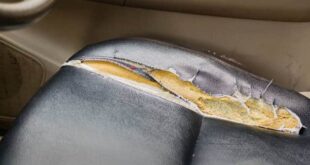Car Body Repair: Essential Tips for Restoring Your Vehicle to Its Former Glory. Car body repair is a crucial aspect of maintaining the aesthetic and functional integrity of your vehicle. Whether you’re dealing with minor dents and scratches or more severe damage, knowing the right approach can save you time and money while ensuring your car looks and performs its best. This article provides a comprehensive guide to car body repair, including essential tips, common questions, and expert advice to help you handle repairs effectively.
Understanding Car Body Repair
Car body repair encompasses a variety of techniques and processes used to fix damages to the exterior of a vehicle. This includes everything from minor cosmetic issues to significant structural repairs. Properly addressing these repairs not only enhances the vehicle’s appearance but also its safety and resale value.
Common Types of Car Body Damage
- Dents and Dings: Often caused by minor collisions or hail, these can usually be repaired with methods like paintless dent repair.
- Scratches and Chips: Surface damage from debris or accidents that can affect the vehicle’s paintwork.
- Collision Damage: More severe damage resulting from accidents, which may involve replacing parts or significant repairs.
- Rust and Corrosion: Damage due to exposure to moisture and road salts, leading to deterioration of the metal body.
Steps to Repair Car Body Damage
- Assessment: Examine the extent of the damage to determine the appropriate repair method.
- Preparation: Clean and sand the damaged area to ensure proper adhesion of repair materials.
- Repair: Apply body fillers, paint, or other materials as needed to restore the vehicle’s surface.
- Finishing: Sand, polish, and seal the repaired area to match the surrounding finish.
DIY vs. Professional Repairs
Deciding whether to tackle car body repairs yourself or seek professional help depends on the extent of the damage and your skill level. Minor issues like scratches and small dents can often be handled with DIY kits, while more extensive damage might require the expertise of a professional body shop.
Choosing the Right Tools and Materials
For effective car body repair, you’ll need a variety of tools and materials, including:
- Body Filler: For filling dents and scratches.
- Sandpaper: For smoothing surfaces before painting.
- Primer and Paint: To match the vehicle’s original color.
- Clear Coat: To protect the paint and give it a glossy finish.
Tips for Successful Car Body Repair
- Clean Thoroughly: Always clean the damaged area before starting the repair to remove any dirt or debris.
- Use Quality Materials: Invest in high-quality repair materials for the best results.
- Follow Instructions: Adhere to the guidelines provided with repair kits and products.
- Work in a Controlled Environment: Ideally, perform repairs in a well-ventilated area away from direct sunlight.
- Practice Patience: Allow adequate drying and curing times for all materials used.
- Test the Repair: Check the repaired area for smoothness and color match before completing the project.
- Keep the Area Moisture-Free: Prevent rust and corrosion by ensuring the repair area remains dry.
- Protect Surrounding Areas: Use masking tape to cover areas that should not be repaired or painted.
- Seek Professional Advice: If unsure about any part of the repair process, consult a professional.
- Regular Maintenance: Regularly inspect and maintain your vehicle to prevent future damage.
10 Frequently Asked Questions (FAQs)
- What is paintless dent repair?
- Paintless dent repair (PDR) is a technique used to remove minor dents without affecting the original paint.
- How can I fix a deep scratch on my car?
- Deep scratches may require sanding, applying primer, and then painting the affected area.
- Can I repair rust damage myself?
- Yes, but it requires thorough removal of rust, application of rust-inhibiting primer, and repainting.
- How do I match my car’s paint color?
- Use the vehicle’s paint code, usually found on the door jamb or under the hood, to find the exact color match.
- What tools are needed for car body repair?
- Common tools include sandpaper, body filler, primer, paint, and clear coat.
- How long does a car body repair take?
- The duration depends on the extent of the damage and the repair method but can range from a few hours to several days.
- Is it worth fixing minor dents?
- Yes, fixing minor dents can improve the car’s appearance and prevent further damage.
- Can I use touch-up paint for large areas?
- Touch-up paint is generally for small chips and scratches; larger areas might need professional painting.
- What should I do if the repair area doesn’t match the rest of the car?
- It may require blending and polishing by a professional to ensure a seamless match.
- How can I prevent future car body damage?
- Regular maintenance, parking away from high-traffic areas, and using protective covers can help prevent damage.
Conclusion
Car body repair is an essential skill for maintaining your vehicle’s appearance and value. Whether you’re dealing with minor scratches or significant collision damage, understanding the repair process and using the right tools and techniques can make a significant difference.
By following the tips provided and considering professional help when needed, you can ensure that your car remains in top condition. Regular inspections and timely repairs will not only enhance the look of your vehicle but also extend its lifespan and performance.
 oto car insurance used car repair
oto car insurance used car repair
